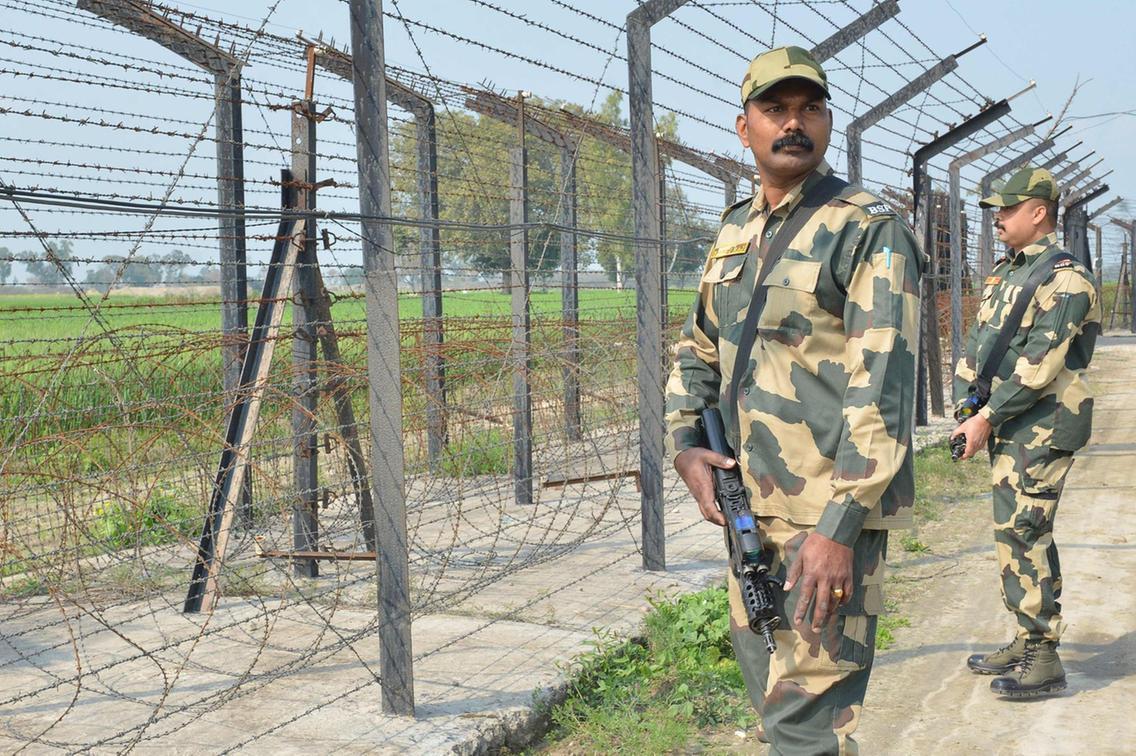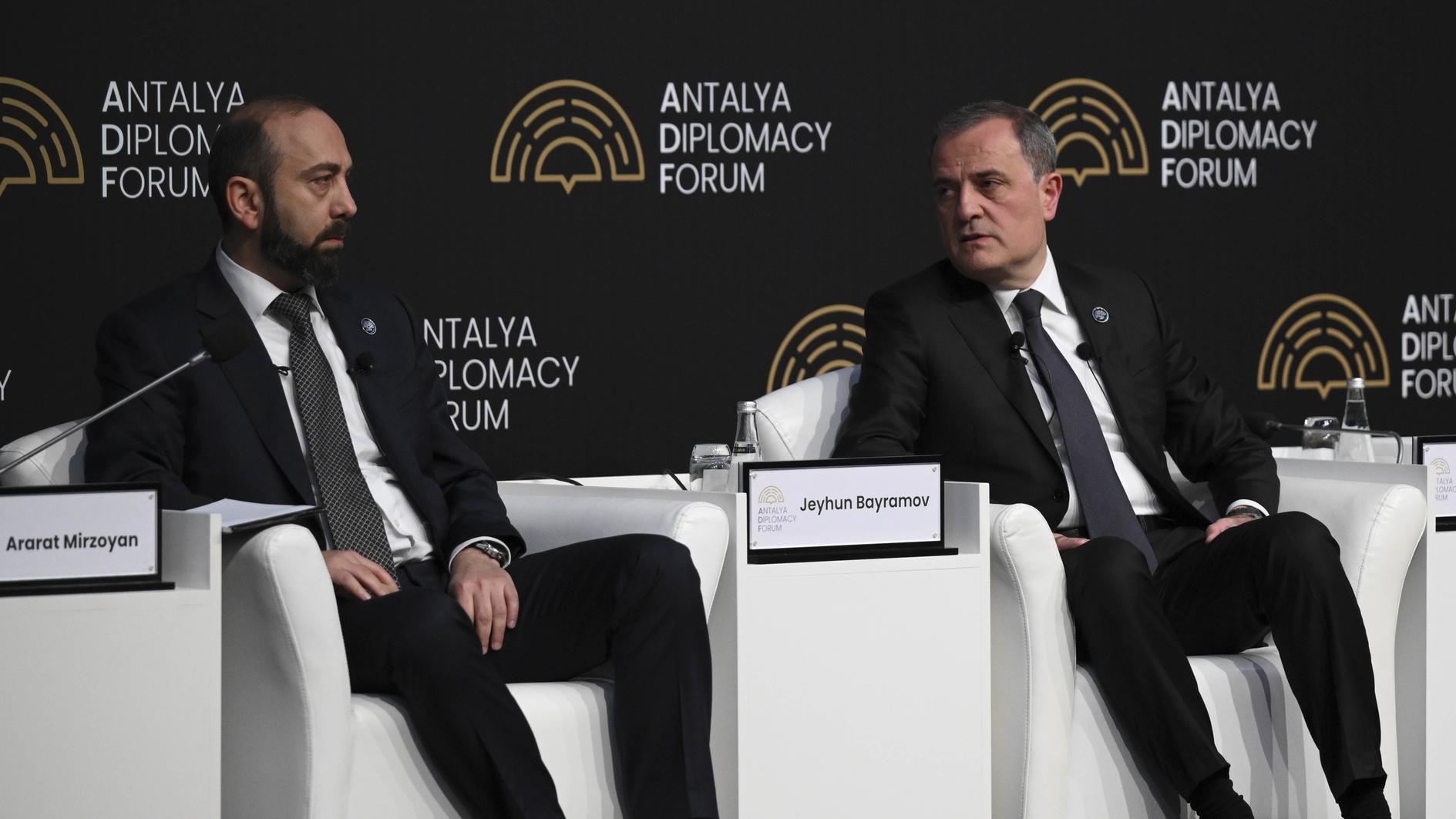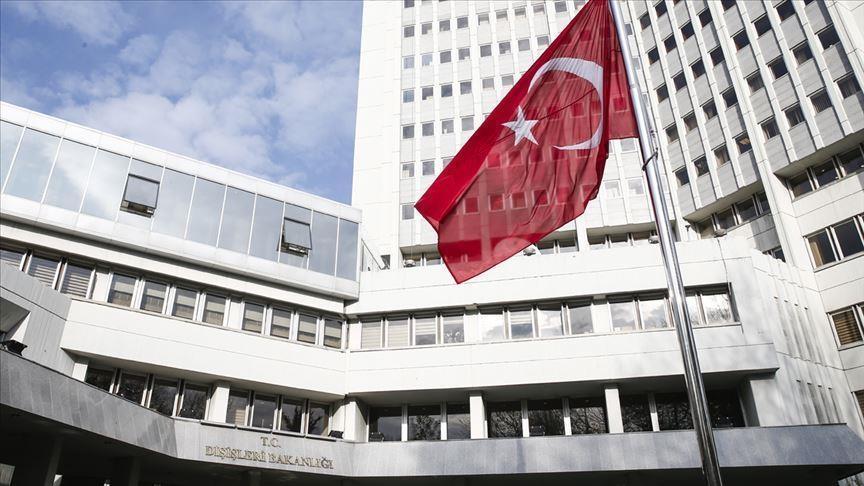India-Pakistan border in Kashmir laced with blood
MUZAFFARABAD-Anadolu Agency

The Line of Control (LoC) dividing the erstwhile state of Jammu and Kashmir into India and Pakistan symbolizes decades of painful history. Now it is once again turning into a battleground between the two nuclear-armed neighbors.
The large population living on both sides of the divide continue living on the edge amid one of the heaviest military presences in the world.
The 742-kilometer (460-mile) de facto border passes through the breathtaking Krishnaghati, Hajipeer, Shamsbari, and Kafirkhan mountain ranges, abundant with lush green dense forests, streams, springs, and vast grazing grounds.
But the sight of villages surrounded by military barracks, people huddled in underground bunkers, and the sounds of artillery fire and helicopters buzzing overhead make the serene surroundings seem lethal.
Sheep graze over the heavily mined boundary. Shepherds sometimes accidentally cross it, oblivious to its contours, only to be shelled by Indian or Pakistani soldiers, or detained.
From the city of Muzaffarabad to Neelam Valley, a distance of 102 km (63 mi), the calm of the serene surroundings is punctured with occasional gunfire. The local trees have taken the brunt of mortar shelling.
Speculations remain rife that tensions willd further escalate after New Delhi revoked the special status of Indian-administered Kashmir this August and released new maps showing the Pakistani side as its own.
The 5-km (3-mi) belt on either side of the LoC is a no-go area. No one can enter this strip without special permission.
Originally, the LoC was meant to be temporary, with plans for a referendum that would allow Kashmiris on either side to choose whether to join India or Pakistan. That vote never happened, and after decades of fighting, the temporary boundary has become a hard border dividing both the territory and families.
Abnormal border
Speaking to Anadolu Agency, Raja Farooq Haider, the prime minister of Pakistan-administered Kashmir', said the LoC is not a normal border. “It houses a huge population on both sides that often becomes victim of hostilities.
“On our side, 600,000 people live in the 5-km area along the LoC. Out of them, 100,000 live in the 500-meter area close to military pickets,” he said.
In Indian-administered Kashmir, some 1.9 million people live within the 5-km range.
While neither India nor Pakistan have discosed deployment figures, analysts estimate there are close to 600,000 Indian troops in the region. There is no estimate from the Pakistan side, according to Christine Fair, a professor at Georgetown University who has studied the region.
Tensions along the LoC heightened this year, with more than 2,000 cease-fire violations reported in the aftermath of a suicide car bombing that killed 40 Indian security personnel in Kashmir and subsequent retaliatory airstrikes on Pakistan by India.
This figure was 1,629 in 2018, according to data compiled by the Indian Defense Ministry.
A Pakistan Army officer who asked not to be named due to restrictions on speaking to the media called the LoC a very treacherous line.
“It's not a straight line,” he explained.
“It runs zig zag, where at many points Pakistani posts are deep inside, surrounded by Indian posts and vice versa. In the Poonch and Krishnaghati
sectors, Pakistani forces have an advantage of height and infrastructure.
In the Muzaffarabad, Leepa and Neelam sectors, India occupied heights and built infrastructure after the two countries agreed on a ceasefire in 2003,” he added pointing towards nearby mountains at Sangam, on the outskirts of the city of Muzaffarabad, the confluence of the Jhelum and Neelum rivers.
But the only communication both armies have is through gunfire, he said with a wry smile.
The 2003 cease-fire helped India build a two-row fence and concertina wire to prevent any movement of men and material.
Over the past many weeks, India has been dismantling the fence in many places, raising fears of a military incursion. But sources in New Delhi say that the government has approved the construction of a new fence to withstand the vagaries of weather at a cost of 25 billion rupees ($351 million).
Animals turn spy
The fencing has wreaked havoc on wildlife in the region. Black bears, leopards, deer and goats unable to move to forestland in search of food now make a beeline to nearby villages.
Locals who live in abject poverty often work as porters for the army. In the air of mistrust between the two archrivals, even animals are eyed with suspicion and labeled as spies.
There is the story of a mule named Pedongi by the Indian troops. It crossed the LoC and was captured by the Pakistani side, which put it to work. A fortnight later, the mule returned to the Indian post carrying ammunition and a machine gun from the rival side.
For this act, the mule was honored with a bravery award by the Indian Army and was absolved of carrying any load thereafter. The story is etched on the walls of the Indian Army's Supply Corps Centre in Bangalore city.
Laced with blood
According to Haider, the story of the LoC is laced with blood and needs to be overrun, much like the Berlin Wall that divided Germany for over four decades.
In 2004, both countries decided to open the LoC in five places -- Mendhar, Poonch, Suchetgarh, Uri, and Tangdhar -- to allow divided families to meet once a fortnight under military supervision.
In November 2005, when a gathering was permitted on the banks of the River Neelam Tawseef Ahmad, a mute boy could not resist the sight of his mother on the other side of the river. He jumped into the stream and was barely saved. His family had crossed the LoC to the Pakistani side when he was barely 3 years
old.
In the Keran sector, a housewife was washed away by waters after she tried to cross the stream to reach to her parents' home on the other side.
Not only the division, but the spike in cease-fire violations is making the lives of people difficult on both sides of the divide. Most of the population has either migrated to safer places or are living in bunkers.
Zainab, 80, told how she used to look at her sister's house every day across the LoC, from her home in the village of Keran.
“When she died a few years ago, I could see her funeral. But I couldn't go across,” she said.
“I curse these borders every day. There isn't a single day we don't talk about them,” she lamented, her old eyes turning misty.
Haider, who himself belongs to a divided family, agrees with the old woman.
















